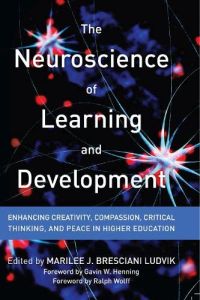Join getAbstract to access the summary!

Join getAbstract to access the summary!
Marilee Bresciani Ludvik
The Neuroscience of Learning and Development
Enhancing Creativity, Compassion, Critical Thinking, and Peace in Higher Education
Stylus Publishing, 2016
What's inside?
Educators and administrators of US higher education detail how to apply insights from modern neuroscience to improve student well-being and learning outcomes.
Recommendation
Researcher and educational expert Dr. Marilee Bresciani Ludvik and more than a dozen colleagues explore the complex relationship between neuroscience and learning in higher education. Together, she and her contributors provide insights into how educators can utilize neuroscience research to enhance student learning, confidence and well-being. This includes integrating mindfulness, compassion and hands-on learning into the postsecondary curriculum – a valuable starting point for those seeking to incorporate neuroscience insights into teaching practices.
Summary
About the Author
Marilee Bresciani Ludvik, PhD, integrates mindfulness, compassion and other evidence-based practices to improve learning outcomes and well-being for students and educators.



















Comment on this summary